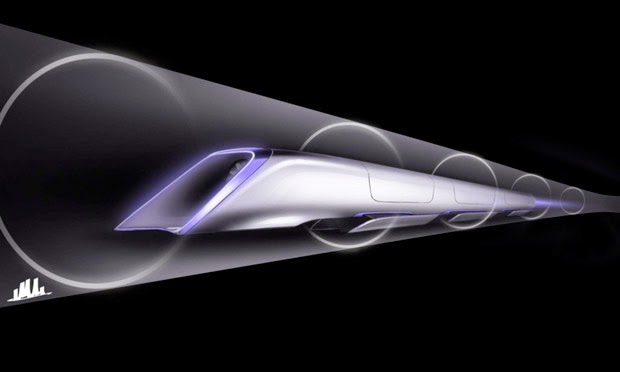Is California's Hyperloop train closer to reality? Startup CEO has 'no doubt', The chief executive of a company attempting to deliver a transport system that could send commuters from Los Angeles to San Francisco at speeds of up to 800mph says he is confident of securing the funding needed to turn the project from a pipe dream into a viable transit option for Californians.
Dirk Ahlborn believes his California-based startup JumpStartFund will be able to develop the Hyperloop project, which would take travellers from LA to San Francisco in 35 minutes (current driving time? About six hours). He told Wired this week: “I have almost no doubt that once we are finished, once we know how we are going to build and it makes economical sense, that we will get the funds.”
The journey began in August 2013 when Elon Musk announced his next project. The South Africa-born tech investor, who made a fortune from PayPal and had gone on to co-found electric sports car brand Tesla, as well as competing with Nasa, said he was planning to revolutionise travel within the US. His idea was Hyperloop, a solar-powered transportation system that would fire people across the country in pods, using a network of tubes, which would travel at speeds of up to 800mph. He claimed it would mean commutes between San Francisco and LA would only take 35 minutes, and cost around $30.
The concept art looked like someone had combined an aqua park ride and the Japanese bullet train, the shinkansen, and initial reaction was understandably skeptical. In a blogpost laying out his idea, Musk asked: “Is there truly a new mode of transport – a fifth mode after planes, trains, cars and boats – that meets those criteria and is practical to implement?” Critics of the design pulled apart his idea. They said the system – which relies on a low-pressurized tube – would overheat, cost far too much (Musk himself estimated up to $10bn) and fall at hurdles such as the costly and time-consuming land acquisition needed to get the project off the ground.
René Lavanchy, who wrote an op-ed piece for Comment is free about the project, summed up many people’s feelings about it: “As far-sighted technology evangelism, the Hyperloop is laudable and deserves deeper discussion. As an intellectual idea, or the groundwork for some speculative fiction, it is fascinating. But as a shovel-ready infrastructure project, it is dead on arrival.”
Musk confessed to not having time to implement his own plan, but JumpStartFund – which created the sub-company Hyperloop Transportation Technologies Inc to develop the system and has a collective of engineers based around the US and uses crowdsourcing and crowdfunding – is attempting to develop Musk’s plan. Overseen by Ahlborn, the network of engineers (which numbers around 100 people who also have day jobs) take responsibility for different areas of the project depending on their areas of expertise. Many of the people on board work for companies such as Airbus, Boeing, Nasa and one of Musk’s own companies, SpaceX, as well as a group of UCLA students who have worked on the potential route, stations and the Hyperloop pods. In exchange for their work the engineers and students are given stock options in the company.
Ahlborn now estimates the project will take 10 years to be realised and ultimately cost around $16bn, with its technical feasibility study due in mid-2015. The main stumbling block for the project now is the technical question of how to get the pods to travel at the speeds they need (the team is working on air compression systems and magnetic levitation), and the more practical issue of raising several billion dollars in funding. Ahlborn is confident they can get the money, and whether Hyperloop changes the way we travel forever or simply remains a dream will depend on it.
Is California's Hyperloop train closer to reality? Startup CEO has 'no doubt'
Unknown
02:44
Popular Posts
Subscribe Us
https://www.youtube.com/watch?v=Q3DFFsNkcXs




